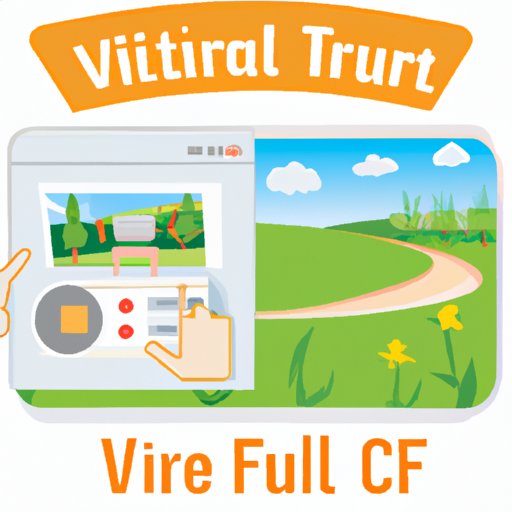
Overview of Virtual Field Trips
A virtual field trip (VFT) is an educational tour conducted online, allowing students to explore places they would not be able to visit in person. It is a great way to supplement classroom learning and provide students with an immersive experience. By using various technologies such as video conferencing, interactive media, and web-based resources, teachers are able to bring distant locations into the classroom.
Benefits of Virtual Field Trips
Virtual field trips offer a number of benefits for both teachers and students. According to a study by the University of Central Florida, VFTs can improve student engagement and increase knowledge retention. Additionally, virtual field trips can be more cost-effective than traditional field trips since there is no need to travel or pay for admission fees. Lastly, they also provide a safe environment for students, as they do not have to leave the classroom.
Types of Virtual Field Trips
There are several different types of virtual field trips, depending on what type of activities are included. Some trips may involve live video conferences with experts or visits to virtual museums, while others may involve virtual tours of historical sites or nature reserves. Additionally, some trips may involve hands-on activities such as experiments or simulations.

Steps to Plan a Virtual Field Trip
Planning a successful virtual field trip requires careful preparation. Here are some steps to follow when planning a virtual field trip:
Choosing a Destination
The first step is to decide where you would like to take your students. You should consider factors such as the age of the students, the subject matter, and the availability of resources.
Assembling Resources
Once you have chosen a destination, you will need to assemble the necessary resources. This includes finding videos, images, and other materials that will help bring the location to life. You may also want to contact local experts who can provide additional information.
Scheduling and Booking the Trip
Next, you will need to schedule the trip and book any necessary resources. This includes reserving virtual meeting rooms, securing speakers, and booking any equipment needed for the trip.
Preparing Students
Before the trip, you should prepare the students for what to expect. This includes giving them background information on the location and providing any necessary materials. You should also discuss any safety issues that may arise during the trip.
Implementing the Trip
Finally, you will need to implement the trip. This involves setting up the virtual meeting rooms, running the activities, and debriefing the students after the trip.
Tips for Making a Successful Virtual Field Trip
In order to make a successful virtual field trip, there are a few tips to keep in mind. First, it is important to utilize technology to its fullest extent. This includes utilizing video conferencing, interactive media, and other digital tools to create an immersive experience. Additionally, it is important to incorporate interactivity into the trip. This could include quizzes, polls, and other activities that engage the students. Finally, it is important to keep the trip engaging. This could include incorporating stories, music, and other creative elements to keep the students interested.

Technology Required for a Virtual Field Trip
In order to conduct a successful virtual field trip, there are certain pieces of technology that are needed. This includes video conferencing software, interactive media platforms, and web-based resources. Additionally, it is important to have reliable internet access and a good audio setup.
There are a number of platforms available for virtual field trips. For example, Google Hangouts and Skype are popular video conferencing tools, while Google Earth and YouTube are useful for exploring locations. Additionally, platforms such as Kahoot and Nearpod can be used for interactive activities.

Examples of Virtual Field Trips
Virtual field trips can be used to explore a variety of locations, from science labs to historical sites. Here are a few examples of virtual field trips:
- A virtual tour of the White House
- An exploration of the Great Wall of China
- A visit to the Sistine Chapel
- A simulated space mission
- A virtual hike through a national park
- A dive underwater to explore coral reefs
There are also many examples of successful virtual field trips. For instance, the National Park Service has conducted virtual tours of Yosemite and Yellowstone National Parks. Additionally, the Smithsonian Institution has held virtual visits to its museums and galleries.
Conclusion
Virtual field trips are an excellent way to supplement classroom learning and provide students with an immersive educational experience. By following the steps outlined above and utilizing the right technology, teachers can create successful virtual field trips that engage students and enhance their learning.
(Note: Is this article not meeting your expectations? Do you have knowledge or insights to share? Unlock new opportunities and expand your reach by joining our authors team. Click Registration to join us and share your expertise with our readers.)
